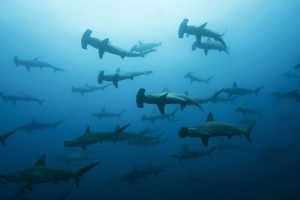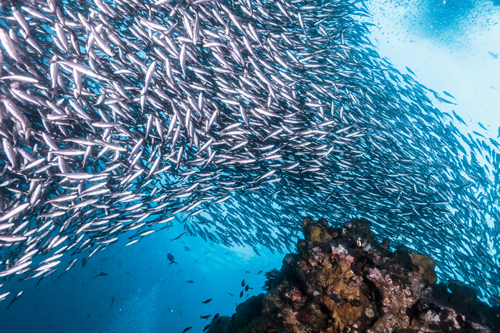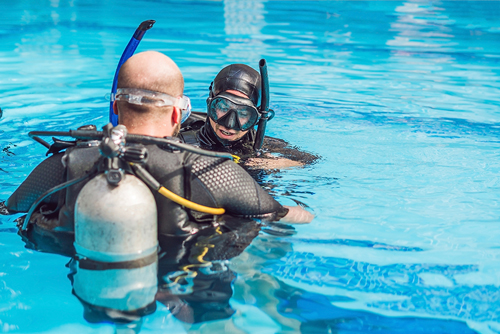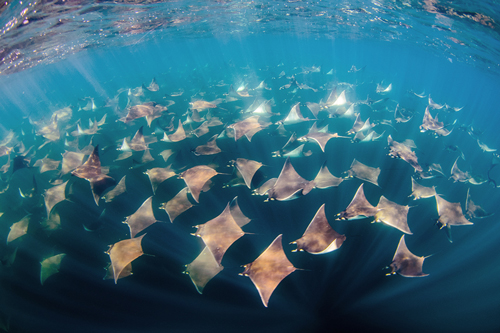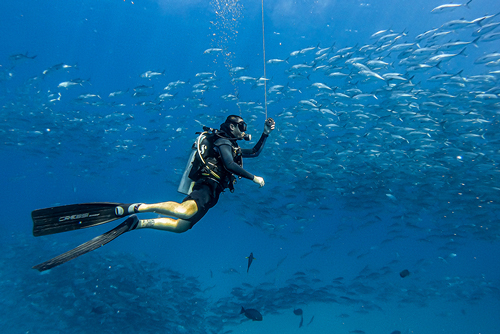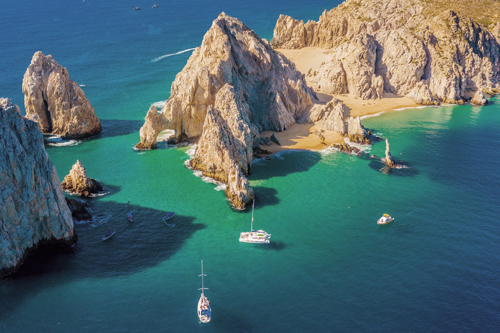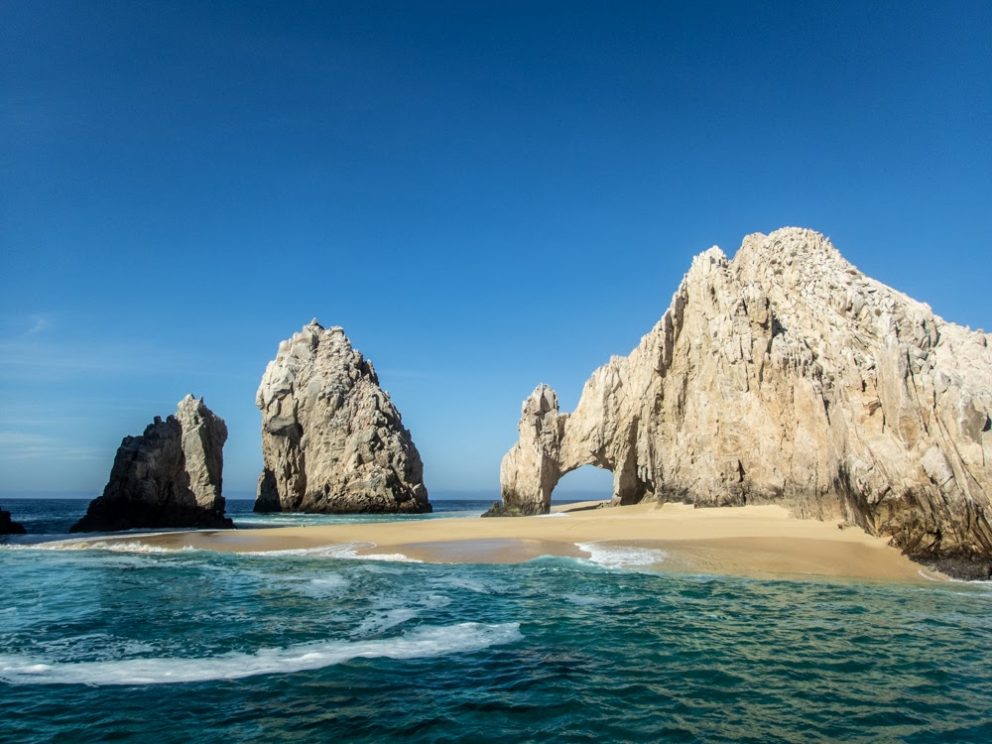The best dive sites not to be missed in Cabo San Lucas
From scuba diving in the Pacific Ocean at the sea lion colony that sits above a large shipwreck, to the huge canyon wall of the Sea of Cortez on the north side, the diving here in Cabo San Lucas is hugely understated and mightily impressive.
You would think that between the hundreds of boats that tour the bay every week and the hotel-sized cruise ships bringing guests in their thousands to the docks of Cabo the underwater realm of Los Cabos would quickly become saturated; a slim chance of any decent animal encounters. In fact the opposite is true.
Cabo San Lucas Dive Spots :
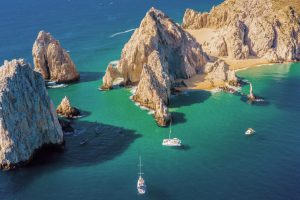
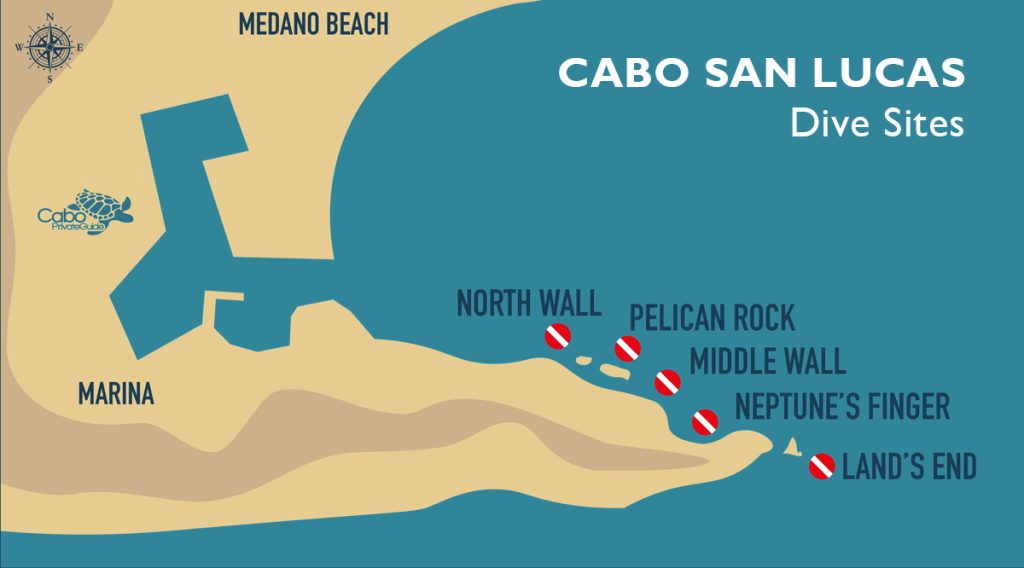
Dive sites : Bay of Cabo San Lucas
Just a 10-minute boat ride from the Marina, Cabo San Lucas bay or Cabo San Lucas Marine Park offers five truly awesome dive sites. From the iconic Lands End to Pelican Rock and Neptun’s Finger, divers of all levels find something extraordinary here.
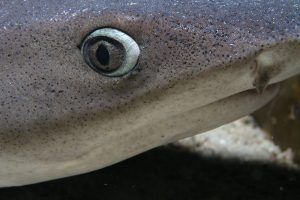
Pelican Rock
- Depth : 15ft to120ft (5m to 40m)
- Level : Beginner to Advanced diver
- Highlight : Cownose Ray, school of Snapper, Angelfish, Porcupinefish, Damselfish, Butterflyfish, Seahorse…
The buoyed safety area dedicated to snorkelers and divers makes this an appealing dive site for courses and first timers.
This is one of the more popular dive sites for a variety of reasons. Prized for its easy diving conditions and impressive variety of marine life!
No matter how busy Pelican Rock may appear at the surface with snorkelers, kayakers, sailboats and paddleboard enthusiasts, there is always amazing wildlife underneath and a good guide will find you space thanks to the vast canyon wall.
Finally, this site is always sheltered from whatever weather is trying to spoil our fun out in the Pacific Ocean at The Arch.
Neptune’s Finger
- Depth : 15ft to120ft (5m to 40m)
- Level : Advanced diver
- Highlight : Sand Falls & Deep Canyon, Mobula Rays, Guitar fishes, Tropical Reef fishes, School of sardine…
Neptune’s Finger is dramatic pinnacle, piercing the surface of the water in the shape of an upside-down Baja California Sur.
It is an advanced dive site if you want to go and see the beautiful fan coral fields down at 100ft/30m. As with most dive sites in the bay it sits on a sloping rocky wall and, for this reason, you can choose your depth.
A wall at 18–24m/60ft–75ft and a small cove at 12m/40ft allow you to make this a shallow dive – however, buoyancy needs to be good due to the boat traffic.
Land’s End (“The Arch”)
- Depth : 30ft to75ft (10m to 25m)
- Level : Open water to Advanced diver
- Highlight : Sea lions, Lundberg shipwreck, Moray eels, Whitetip reef shark
If you visit Cabo when the swell is low and the Pacific winds aren’t blowing a gale, you’ll have the chance to make one of the most interesting dives in the area.
The Lundberg cargo ship went down here in the 1950’s after losing engine power in a storm. It now lies scattered at 12-15m/40-50ft. The Sea Lions play at the wreck and if you’re lucky they will let you join them.
A small channel at the side of their colony allows you to pass back and forth between the Sea of Cortez and the Pacific Ocean.
Currents that swell at the point can make for an interesting drift dive to the Land’s End pinnacle (rumoured to be the most southern point of Baja California) where you can see sea lions hunting huge schools of fish. Pelagic game fish are often spotted here, as are occasional humpback whales.
North Wall
- Depth : 40ft (12m)
- Level : Beginner to Advanced diver
- Highlight : Cownose Ray, Mobula rays, Damselfish, Angelfish, Butterflyfish, Macro, Seahorse…
North Wall is one of our favourite Macro Sites. When you first descend onto a sandy bank at 5m/15ft we are greeted by the usual pufferfish families and an occasional school of goatfish. A hawksbill turtle is sometimes seen at the very beginning of the dive. The rocky outcrops are home to an abundance of crustaceans, macro life (sea horses, frogfish, nudibranchs), and tons of moray eels in almost every crevice. You can often spot Octopus roaming around too!
This is a great second dive for shallow macro hunters and the topography varies from horse-shoe coves to steep drop-offs. 2 distinct pink coral heads make for great photos!
Middle wall
- Depth : 80 to 110ft (25m to 32m)
- Level : Experiencied diver
- Highlight : Deep dive site, Mobula rays, Eagle rays, Giant green morays, Purple Gregorian sea fans…
This dive site sits just off Lover’s Beach and is a deep wall dive. The descent is an easy 15ft/5m and we gradually get deeper. There are sightings of mobula rays, eagle rays, giant green morays, and healthy purple Gregorian sea fans scattered around. A few lucky divers have encountered the sand-tooth tiger shark roaming in the depths!
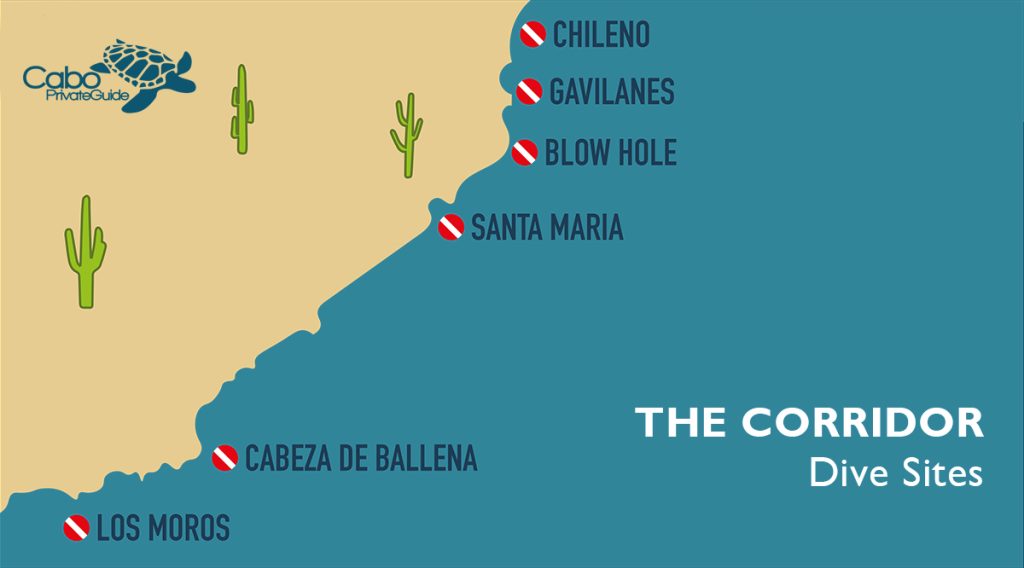
Dive sites : The Corridor of Los Cabos
The meeting point of two significant oceans makes for some utterly outstanding diving here in Cabo San Lucas. Take a boat 30 minutes further north into the mouth of the Cortez and you’ll have a selection of the best dive sites to choose from: the area we call The Corridor.
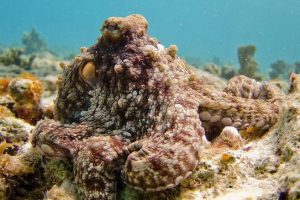
Chileno Bay
- Depth : 20ft to 60ft (8m to 18m)
- Level : Beginner to Advanced diver
- Highlight : Coral reef, schooling jacks, reef sharks, Tropical reef fishes …
The shallow waters at Chileno Bay are more impressive than the deep.
Coral is much healthier in the Corridor than in the shallow waters of Cabo San Lucas because of less human impact.
Diving from one side of the rocky outcrop to the other you can surround yourself with schooling jacks, snappers and grunts. Check under rocky boulders for reef shark. It is common to see turtles, eagle rays and mobula rays passing by.
Blow Hole
- Depth : 40ft to 110ft (12m to 35m)
- Level : Advanced diver
- Highlight : White tip reef shark, Grouper, Snapper, Marine turtle…
Named after the hole in the caves above that create a blowhole when the waves hit and blow through.
This dive site has beautiful corals in the deeper water and there’s a resident white tip reef shark in one of the rocky caves. Huge morays can be seen down here.
Whale Head
- Depth : 30ft (10m)
- Level : Beginner to Advanced diver
- Highlight : Healthy Coral reef, Eagle rays, Needlefish, Angelfish, Porcupinefish, Damselfish, Butterflyfish…
The shallowest dive but by no means inferior. The underwater channel here leads through some of the most interesting topography in the area.
Channels lead to chambers and then eventually out into a rocky clearing with huge rocks covered in soft coral. This place is famous for spotting eagle rays.
Santa Maria
- Depth : 40ft (12m) | Max depth 70ft (22m)
- Level : Beginner to Advanced diver
- Highlight : Healthy Coral reef, Tropical reef fishes, Macrolife…
Santa Maria is one of the better-known dive sites in Los Cabos and is frequented by many tour boats. As our business model is trying to ‘escape the crowd’ we only go here on quiet days or early in the morning. The dive begins at the south side of the cove and the rocky reef takes you out and away from the bay. There are reefs of Gregorian sea fans, eels, octopus, tropical fish families, and sometimes bottom-welling rays such as bat rays and butterfly rays.
Los Morros
- Depth : Max depth 70ft (22m)
- Level : Advanced diver
- Highlight : Rays and reef sharks, Tropical reef fishes…
Classed as a corridor dive, this reef is not frequented by many dive centers! It’s mainly accessible from November until March when the swell is low. It’s a rocky reef with the deepest part bottoming out at around 22m/70ft. There are various rock piles; home to rays and reef sharks, as well as the usual fish life of tangs, parrotfish, hawkfish, butterflyfish and Cabo’s popular pufferfish!
Gavilanes
- Depth : 40ft (12m)
- Level : Beginner to Advanced diver
- Highlight : Canyons, Moray Eels, scorpion fish, octopus, turtles, rays…
This is arguably the most sheltered dive site in the corridor when the area has south swells coming in. Beginning in a shallow rocky descent, divers head out to sea at a steady 40ft/12m until the reef starts to bottom out to any max depth that you want. The rocks make for interesting topography and form canyons, chambers and corridors. As we weave in and out of these formations, we can expect to see Moray Eels in abundance, scorpion fish, octopus, turtles, rays and tons of tropical fish. Keep your eyes peeled for coral lobster!
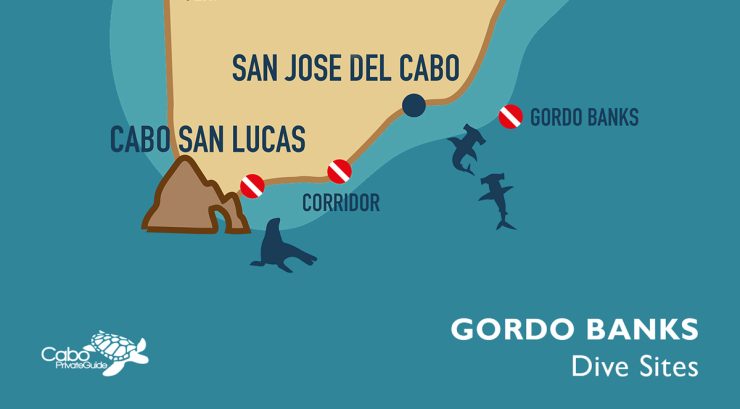
Gordo Banks
Located 29 miles (46.5km) offshore, Gordo Banks offers a thrilling dive after a 1.5-hour boat ride from Cabo San Lucas.
Highlights include encounters with hammerhead and silky sharks, wahoo, and tuna. Keep an eye out for pelagic wildlife such as mobula rays, humpback whales, and if you’re lucky, dolphins and even orcas!
Gordo Banks Dive Site
- Depth : 30ft (10m)
- Level : Beginner to Advanced diver
- Highlight : Hammerhead Shark, Hound Sharks, Mobula Ray, Jacks Fish, Bonito, Yellowfin Tunas…
This site features a seamount, suitable for experienced divers with Advanced Certification. Dive depths range from 100-130ft (30m-40m), so consider getting a deep diver certification if you haven’t already. I also recommend a check-out dive beforehand.
